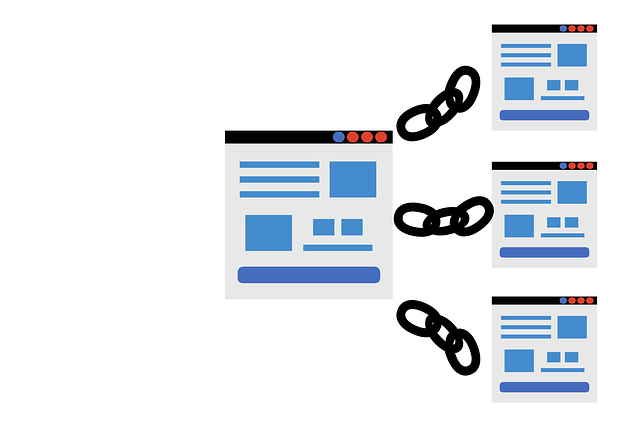12 Free and fast ways to increase website traffic
Learning how to increase website traffic can be overwhelming. You will learn here about free ways to increase website traffic.
As stated previously, there are many free techniques to increase organic traffic to your site. Before we get started with these, let me explain what organic means in the context of search engines. Organic is any technique that does not cost money for getting traffic to your site.
Traffic in the context of search engines is when people come to your website. You want to increase website traffic to attract more eyes to your business! For example, if you have a shoe store, you could increase website traffic by putting an advertisement for your store on other websites.
Good quality, organic traffic is defined as visitors who come to your website and stay for a while. They read the content, come back frequently, and take advantage of some of the special offers you provide on your website.
Sounds good? Let’s explore some things you can do to increase the volume of quality traffic your website is getting for free!
The key to increasing web traffic is search engine optimization. The practise of optimizing your website so search engines can properly track you and provide that information straight to consumers has never been easier than it will be with SEO today!
Besides SEO, you can try other organic techniques to increase website traffic. Here are a few organic traffic techniques you can easily do right now:
Follow These Strategies to Increase Web Traffic for Free
Marketing today is all about growing your circle of influence, as measured by the traffic to your website. Many businesses rely on word-of-mouth referrals and new customers due in large part because it’s often offline where interested listeners first learn more about what you have going on for themselves or others at their company.
But how do these people find out? They visit your website! Below are some methods that will definitely drive visitors towards your website:
Make Use of Social Media to Expand Your Audience
If you own a business, social media is the way to go. Social media marketing is a free marketing source if it is done correctly. You are leaving a digital footprint by creating social media accounts and actively posting, which you can track using Google analytics.
This allows you to see where people are coming from and how they are socializing with your business. Utilize social media to spread the word about your company! By increasing social media followings, you will be able to reach out to more people at once. Whether you use social media for marketing purposes or not, social media is a great way to market your product or service.
There are many social media platforms to start using for free. Here are a few social media sites you can begin using today:
Twitter – Twitter is a social networking site that allows users to connect to each other by following one another and sharing their thoughts with others.
Facebook – Facebook is a social media website that allows users to connect with their friends and family by sharing photos, videos, text posts, etc.
Pinterest – Pinterest is a social media site where people can gather images from around the web in order to share them through Pins on a virtual board (pinboard).
For example, if you have a social media account for plumbing services in Tennessee, people looking for these types of services will be able to view your page and contact you with any inquiries. If you are looking to increase traffic to your website, social media is a great way to do it.
Keep in mind that social media should be used strategically. Social media sites are not built for spamming people with commercial content or other ads. You need to use social media as an essential part of your marketing strategy and communicate with your followers, which you can track through Google analytics.
Increase your website’s traffic by using the right hashtags
Hashtags are an integral part of social media. Each platform has its own hashtags, so when someone is scrolling through their feed on one social media site, they’re likely to see posts that are labeled with the same hashtags on other sites. Hashtags organize content by creating a shared label.
This allows users to follow trending posts with ease. Hashtags also play a role in search engine optimization (SEO), making them important for online marketing purposes.
Google analyzes hashtags and their popularity to determine how frequently they are used. Hashtags that are used more frequently will be more popular, which means they’ll rank higher on Google’s list of trending searches.
Use hashtags that are short, unique, and relevant to your post. Hashtags for SEO need to be targeted, based on both your brand and the content you’re creating.
Here are a few examples of hashtags that will help drive traffic to your social media posts:
- #marketingtips (to target all marketing tips)
- #plumbingservices (to target plumber services)
- #plumbing (to target plumbing)
- #socialmediatips (to target tips about social media marketing)
- #marketingtipsforplumbers (to target specific ads for plumbers)
Note: Hashtags need to be appropriate and relevant to your industry. Hashtagging a post with a popular phrase might get a lot of engagement, but it could also get you into trouble with search results. Hashtagging a post about plumbing services with #socialmediatips is not going to help your SEO and could possibly harm it.
Hashtags can also be used to increase website traffic. Including relevant hashtags in a post, can help you target website traffic to specific pages that are relevant to the content. This will help improve website traffic and keep your social media posts up to date.
Increase website traffic by using on-page SEO techniques
How website traffic is generated is important for website owners. The first step in generating website traffic is optimizing your website so it appears on search engine results pages (SERP). Optimizing the on-page of the website and attracting website traffic is possible when website content meets the needs of the website visitor and successfully engages them.
Most website traffic comes from search engine results (Google, Bing). To properly optimize on-page and increase website traffic it’s important to understand what visitors are looking for when they find your website. You can use many on-page optimization plugins, I prefer to use the Yoast website plugin, it is free and easy to use.
When website content is optimized and matches the specific keywords and search terms, website traffic increases. This is because website visitors see your website as a relevant website that meets their website needs.
Using on-page optimization on your website allows you to increase incoming website traffic while improving SERP rankings, which can ultimately improve CTR (click-through rate). It’s important to remember that website traffic is generated when website visitors click on your website link. If website visitors do not see how your website matches their search terms, they are likely to click the back button or leave your website for another website.
Boost Your Brand’s Authority by Building More Backlinks!
The important part of SEO is building backlinks, linking from website to website. Strong backlinks build a website’s authority. This not only helps in website traffic but also affects the website’s SEO rankings.
Another important thing is the website’s internal linking structure. Internal links boost website backlinks, also it boosts website traffic and website ranking too. Internal links improve website user experience too.

A must-have Content Marketing Strategy and Engaging Content
Content marketing is highly valuable for website traffic, link building, and backlinks. A content marketing plan is helpful in creating a clear path to website success. Without a website content marketing plan in place, website owners can feel lost in creating content for their website.
Website owners must ensure they share engaging posts on social media networks in order to keep website traffic high and visitors engaged with website content. Content marketing requires attention to the type of posts made through engaging images or videos along with written website content. Websites without engaging website content will not see website success.
Check website analytics to determine website traffic and website visitors’ engagement of website content. Website owners can then use this information to create more of the type of content that is viewed as engaging by website visitors.
Blog posts are the most common form of content marketing, but website owners must consider the website product and service categories they have when deciding which type of website content to develop. A website can offer engaging website videos, website articles, or website infographics depending on the website niche.
Check for engagement with website content by looking at analytics in order to determine what types of sharing are most successful. Compelling headlines and website images are important parts of website content that website owners can use to engage website visitors.

Involve Yourself in Guest Posting on Other Sites
Read their messages and share their knowledge with new audiences. It’s also a fantastic opportunity for bloggers who want to expand their exposure and ensure that they’re reaching the widest possible audience.
However, it’s important that guest posts are done in the right way and you should always check the sites’ guidelines before you submit your articles.
Guest blogging is an opportunity to build your brand authority and establish yourself as a subject matter expert in your field. Here are four simple steps that will help you to create guest blog posts that engage, inform and convert.
1) Understand the target website’s goals
2) Create content that matches these goals
3) Optimize your article for SEO
4) Increase the impact of your guest post
Use Online Directories & Review Websites
Directories and review sites may be used to help build website traffic. Utilizing directories and review sites can be a great way to push more website traffic toward your website; however, it is important to make sure the directory or website you are submitting your website complies with Google’s guidelines.

Bad website UX leads to website bounce rate
Did you know that website bounce rate is closely tied to a good user experience? A website’s bounce rate is the percentage of visitors who leave after viewing only one page. If users are not getting what they need quickly and easily, then their likelihood of leaving without reading more than one page or clicking on another website link will be high.
Bounce rate is used by website owners to judge the success of their website, largely because it tells them if visitors are finding what they are looking for when they visit a website. High bounce rates are generally interpreted as meaning that users are not interested in the website’s content, or that users think the website lacks usability.
Not Mobile-Friendly and Responsive Website
Don’t be surprised if your website’s bounce rate increases because it doesn’t have a mobile-friendly website design.
In recent years, mobile websites have been proven as a better platform where users spend more time because they’re able to do many things through their mobile devices such as searching information, updating social media sites, shopping, and much more. Not only that, website traffic will increase and website ranking will go up once you make your website mobile-friendly and responsive because the website design is created for mobile devices.
According to Google’s latest algorithm update – Mobilegeddon – businesses with mobile websites should be guaranteed better SERP (search engine result page) placement than those without a mobile website. As a result, website owners are rushing to meet this requirement by either creating their website responsive or mobile-friendly website design.
Imagine that you have a website that doesn’t support all of the current browsers and operating systems on mobile devices. As more users switch to mobile devices for browsing the web, it’s becoming increasingly difficult for businesses with non-optimized website designs to get their websites noticed. A responsive website ensures that your website looks good on all of the devices, helping you rank better for mobile searches.
If you currently have a website without any mobile version at all and it’s not responsive, we highly recommend you to develop either a responsive website or a mobile-friendly website.
Target Long-Tail Keywords
By now you’ve probably identified your high-intent keywords and popular keywords. Great work! Now it’s time to start working on long-tail keywords too.
What are long-tail keywords?
Long-tail keywords are searches that include multiple words, usually three or more. Because there’s more search volume for these longer keyword phrases, they’re often easier to rank for.
Long-tail keywords also generally convert better than shorter search terms because they’re more specific and targeted. Plus, Google typically ranks pages higher that use long-tail keywords in the title tag and on-page copy.
Invite Guests to Write on Your Website
Guest post is a two-way street. It exposes website traffic to your website and to the website you guest blog on. This is a mutually beneficial relationship for website owners in any industry. If you want to bring new readers to your website, try inviting quality website traffic in your niche to guest post on your website.
The benefits of having guest posts published on your website are widespread:
- Gives exposure to other website traffic
- Increases backlinks which improves SEO ranking for website traffic that’s been linked from the others’ websites
- Pushes visitors on social media, donation pages, to subscribe to mailing lists, contact forms etc., increasing conversions!
Make sure that you only post high-quality content, original and informative. This will give website traffic a good impression of your website and encourage them to contribute content on your website to help you grow your website’s influence and readership because Google loves website content.
Your website traffic won’t have a clue who you are, so make sure to promote yourself and website traffic on the guest post. Link to your website and social media platforms in a professional manner at the end of the article or in an ‘about me section if you have one. Try not to overdo it though, website traffic can get easily irritated by website owners that shove their website in the guest post.
Regular Post Content to LinkedIn
If you’re looking to increase website traffic and increase your profile visibility, then posting content to LinkedIn on a regular basis is the answer.
As more people use social media as a way of finding jobs or keeping up-to-date with their professional network, LinkedIn has become an essential tool for businesses and professionals alike. Posting high-quality content to LinkedIn on a regular basis is an excellent way to show website visitors that your website or blog is active and provides value.
Your website’s high-quality content can be repurposed and posted as LinkedIn updates, which will attract website traffic back to your website as well as increase profile visibility.
Learn how to increase website traffic at no cost! You can do this by using the following twelve proven techniques.
Author Bio-
Shanta Narang is a Passionate, amiable, dynamic, and result-oriented digital marketing professional with over 12 years of experience in SEO, content management, brand marketing, business management, and educational counseling. She facilitates digital transformation initiatives for organizations to help them grow in the online platform. Being a DM Specialist, She helps companies to succeed in their business with the help of the latest trends and technology.
Follow me on Twitter, Facebook, Linkedin
Twitter- https://twitter.com/SEOwithShanta
Facebook- https://www.facebook.com/seowithshanta

